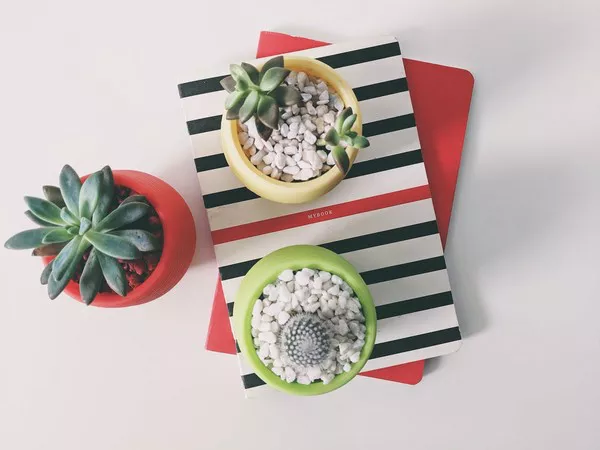Succulents have earned a special place in the hearts of plant lovers worldwide due to their striking appearance and low-maintenance nature. However, for cat owners, there is an additional layer of consideration when it comes to selecting plants. Cats are known for their curious nature and tendency to nibble on greenery, making it essential to choose succulents that are safe for feline companions. In this comprehensive guide, we will explore the world of cat-friendly succulents, potential risks of toxic plants, and tips for creating a harmonious environment for both plants and pets.
Cat-Friendly Succulents: Prioritizing Pet Safety
Succulents come in a wide array of shapes, colors, and sizes, but not all of them are safe for cats. Some succulent species contain compounds that can be toxic to our feline friends when ingested. To ensure a pet-safe environment, it’s crucial to select succulents that are non-toxic. Here are some popular cat-friendly succulent choices:
1. Haworthia
Haworthia succulents, often referred to as “zebra plants,” feature unique striped or spotted patterns on their leaves. These small, rosette-forming succulents are safe for cats and can add a touch of elegance to your indoor garden.
2. Echeveria
Echeverias are beloved for their stunning rosette shapes and vibrant colors. These succulents are generally considered safe for cats and can thrive both indoors and outdoors with the right care.
3. Sedum
Sedums, also known as stonecrops, are a diverse group of succulents that vary in size and appearance. Many sedum varieties are safe for cats and can be an excellent addition to your pet-friendly garden.
4. Burro’s Tail (Sedum morganianum)
This trailing succulent is known for its long, cascading stems adorned with plump, teardrop-shaped leaves. Burro’s Tail is generally safe for cats and can create a visually appealing hanging display.
5. Christmas Cactus (Schlumbergera)
The Christmas cactus is a popular holiday plant that belongs to the succulent family. Unlike some other succulents, Christmas cacti are non-toxic to cats, making them a festive and safe choice.
Recognizing the Risks: Toxic Succulents and Their Dangers
While some succulents are safe for cats, others can pose serious health risks if ingested. It’s crucial to be aware of the potential dangers and avoid having toxic plants in your home or garden. Here are a few examples of toxic succulents:
1. Jade Plant (Crassula ovata)
The jade plant is a commonly grown succulent, but it can be toxic to cats if consumed in large quantities. Ingesting jade plant leaves can lead to vomiting, lethargy, and even more severe symptoms.
2. Kalanchoe
Kalanchoe species, known for their vibrant and long-lasting flowers, contain compounds that are toxic to cats. Ingesting these plants can result in gastrointestinal upset and other health issues.
3. Aloe Vera
While aloe vera is prized for its soothing properties, it’s important to keep it away from cats. The gel within aloe vera leaves can cause gastrointestinal distress in cats if ingested.
4. Sago Palm (Cycas revoluta)
Though not a true succulent, the sago palm is often included in succulent collections. All parts of the sago palm are highly toxic to cats and can lead to severe liver damage if ingested.
Creating a Safe and Harmonious Environment
Maintaining a pet-friendly succulent garden requires a combination of careful plant selection and responsible pet ownership. Here are some tips to create a safe and harmonious environment for both your succulents and your cats:
1. Research Plants Thoroughly
Before adding any new succulent to your collection, research its toxicity level to ensure it’s safe for your cats. Refer to reputable sources such as animal poison control centers or pet care websites.
2. Provide Alternative Distractions
Cats are naturally curious creatures, so providing them with alternative sources of stimulation can discourage them from nibbling on plants. Offer cat-friendly toys, scratching posts, and playtime to keep them engaged.
3. Elevate Plants
Place your succulents in areas that are difficult for your cats to access. Hanging baskets, shelves, or designated plant stands can keep your plants out of reach.
4. Observe Your Cats
Pay attention to your cats’ behavior around your succulents. If you notice any signs of nibbling or interest, consider relocating the plants to a more secure area.
5. Training and Positive Reinforcement
If your cats display a tendency to explore your plants, employ positive reinforcement techniques to discourage the behavior. Reward them for ignoring the plants and redirect their attention to appropriate toys.
Conclusion
Succulents and cats can coexist harmoniously when the right precautions are taken. By selecting cat-friendly succulents and being mindful of potential risks, you can create an environment that ensures both the safety of your pets and the beauty of your plants. Responsible pet ownership, thorough research, and strategic placement of plants can help you strike a balance between your love for succulents and your commitment to your feline companions’ well-being. With the right approach, you can enjoy the captivating world of succulents while providing a safe and enriching space for your beloved cats.


